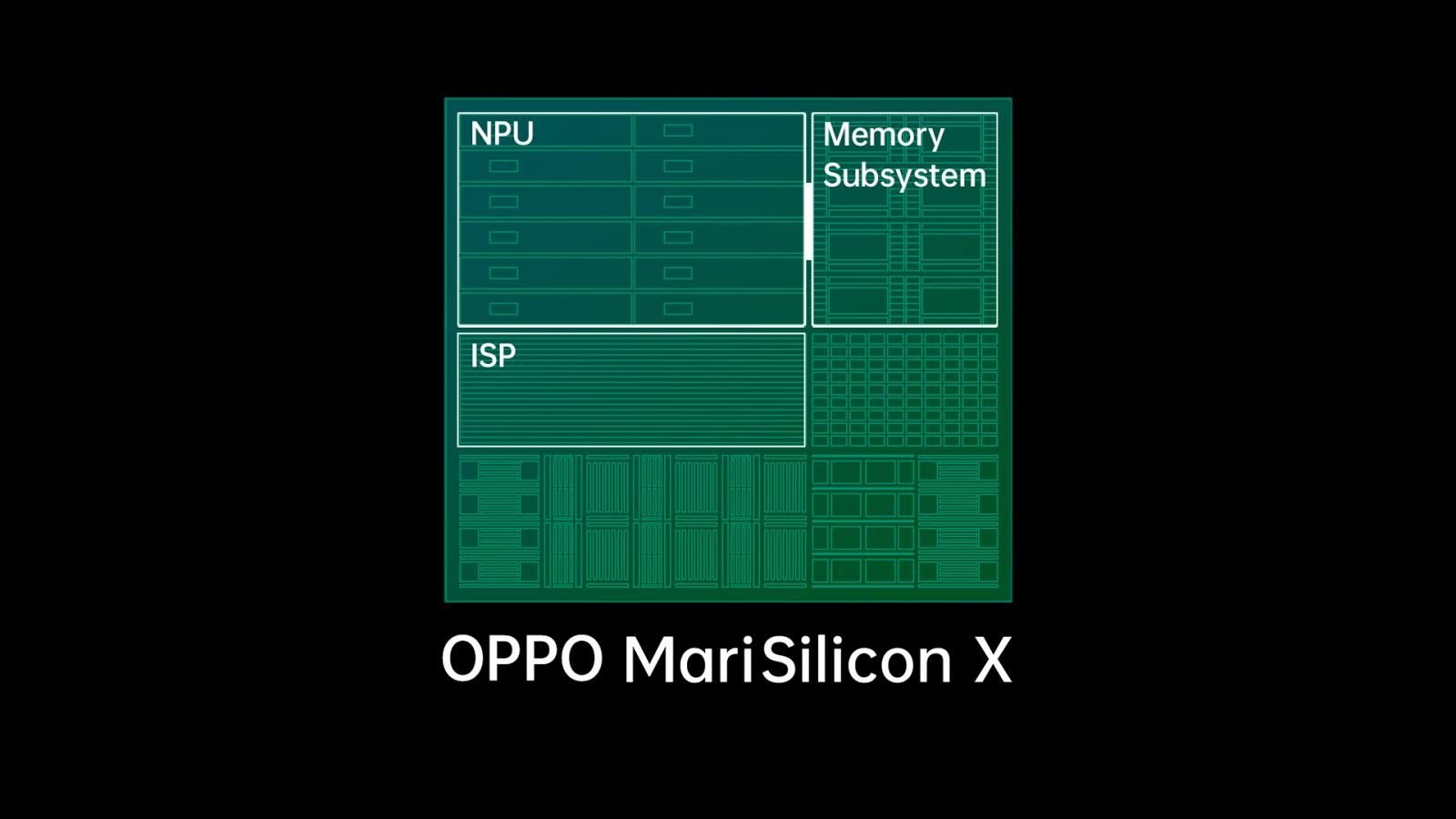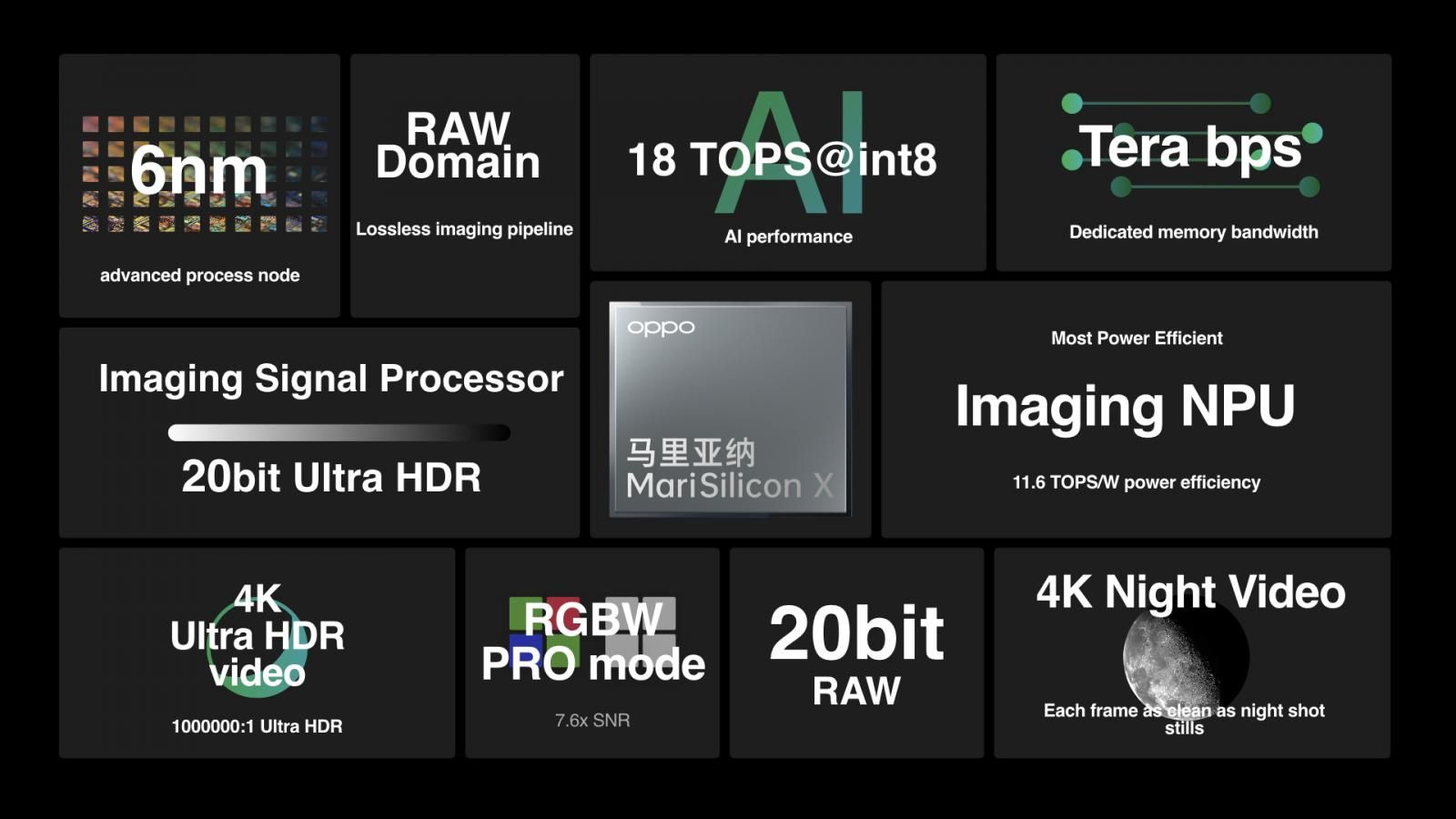OPPO today officially announced its first self-designed imaging NPU – MariSilicon X – at the OPPO INNO DAY 2021 event. The chipset is built on the 6nm process, and it comes with an advanced NPU, ISP, and multi-tier memory architecture that delivers great performance and power efficiency. The chipset allows real-time RAW processing and it can capture 4K AI Night Video with live preview.
The MariSilicon X is built on the 6nm process, and it integrates with OPPO’s self-designed NPU, ISP, and high-speed multi-tier memory architecture that provides advanced computing power and high-power efficiency to meet OPPO’s needs for image processing.
The NPU will allow OPPO to process nighttime video and photos a lot faster, and with greater efficiency than before. The entire MariSilicon X is built from scratch by OPPO, and the chip doesn’t use any third-party IP, which OPPO is quite proud of.
Source: OPPO
When it comes to power and efficiency, the numbers tell a lot. The brand new MariSilicon X NPU delivers 18 trillion operators per second (TOPS), which is plenty enough power to support OPPO’s AI algorithms. The chip also comes with a power efficiency of 11.6 TOPS per watt, and as a result, it’ll consume less battery when used.
The NPU features a dedicated tera-bps memory subsystem, which allows the Mari Silicon X to make full use of the NPU’s computing power without it being restricted by memory. The NPU also has a dedicated DDR with extra bandwidth of up to 8.5 GB/s, and its multi-tier memory architecture minimizes latency and other delays, while also consuming less power.
Source: OPPO
OPPO’s AI algorithms include noise reduction, AI-seg, and other multiple AI operations running at the same. OPPO says that noise reduction is up to 20-times faster than what was previously possible on the OPPO Find X3 Pro with MariSilicon X, and it consumes 50% less power compared to the previous method.
Ultra HDR
The MariSilicon X has a powerful ISP that allows images to be captured in 20 bit 120db dynamic range, which is 4-times greater than the one found on the OPPO Find X3 Pro. It gives images a contrast ratio of 1,000,000:1 between the brightest and darkest areas, keeping images more true-to-life.
Real-time RAW Processing
Thanks to the great power and high-data throughput, the MariSilicon X can perform real-time 4K AI processing and 20bit HDR fusion in the RAW dalmatian at the pixel level. OPPO says that by processing original imaging data, the NPU can achieve an 8dB signal-to-noise ratio for images.
RGBW Pro Mode
MariSilicon X uses a Dual Image Pipeline design that doubles raw supersampling. It allows the full potential of OPPO’s RGBW sensor, and it supports the separation and fusion of RGB and White signals to deliver a 8.6dB improvement in signal-to-noise ratio, and 1.7-times improvement in texture quality, making images more expressive in both video and photos.
4K AI Night Video
Thanks to the performance and power efficiency of the new NPU, OPPO’s AI Noise Reduction algorithms can create clearer and sharper videos, even at night. It features a greater dynamic range and better color reproduction, making each frame look as rich as a still photo. OPPO also claims that 4K AI HDR Night Video captures is a first on Android phones.
Source: OPPO
OPPO also announced that the new MariSilicon X will be available in the new OPPO Find X Series, coming sometime in Q1 2022.




